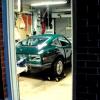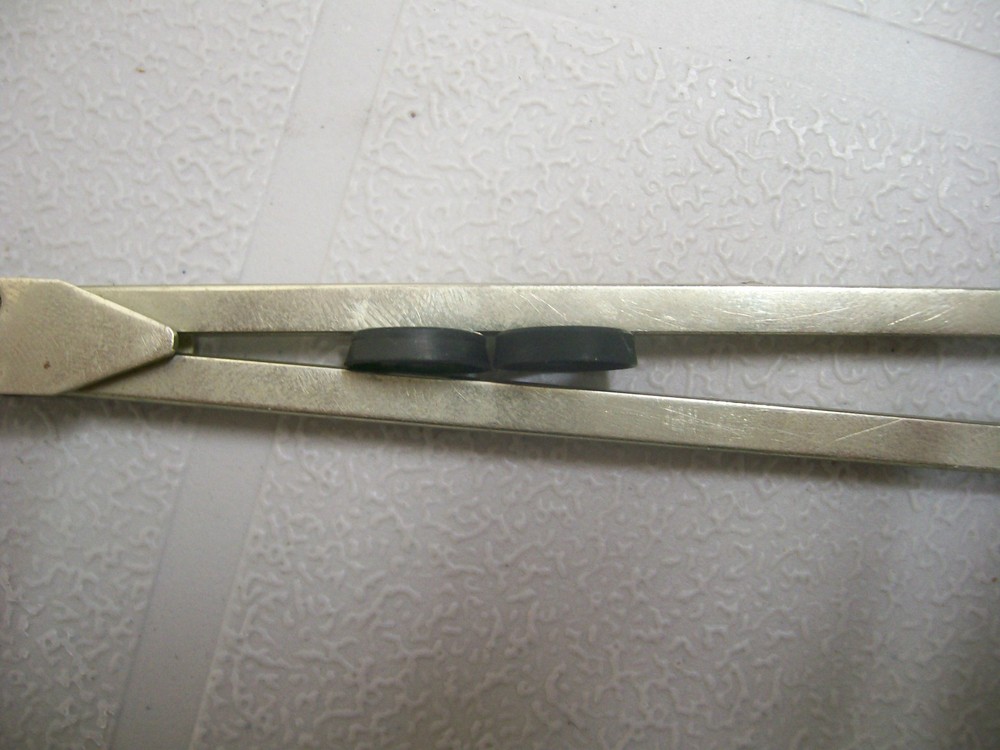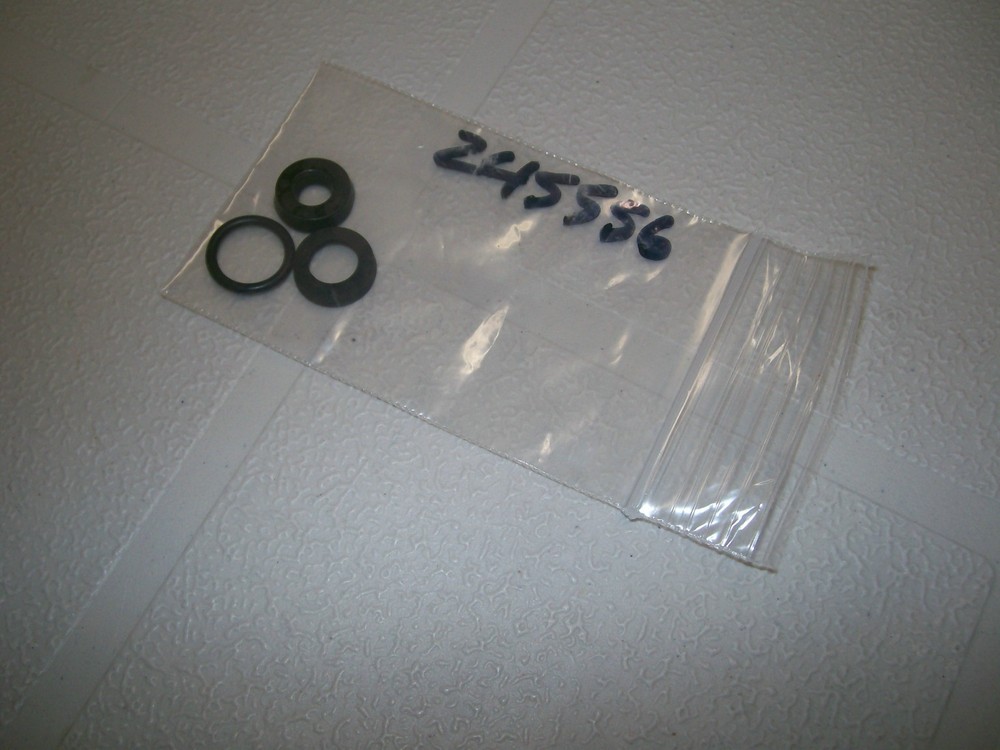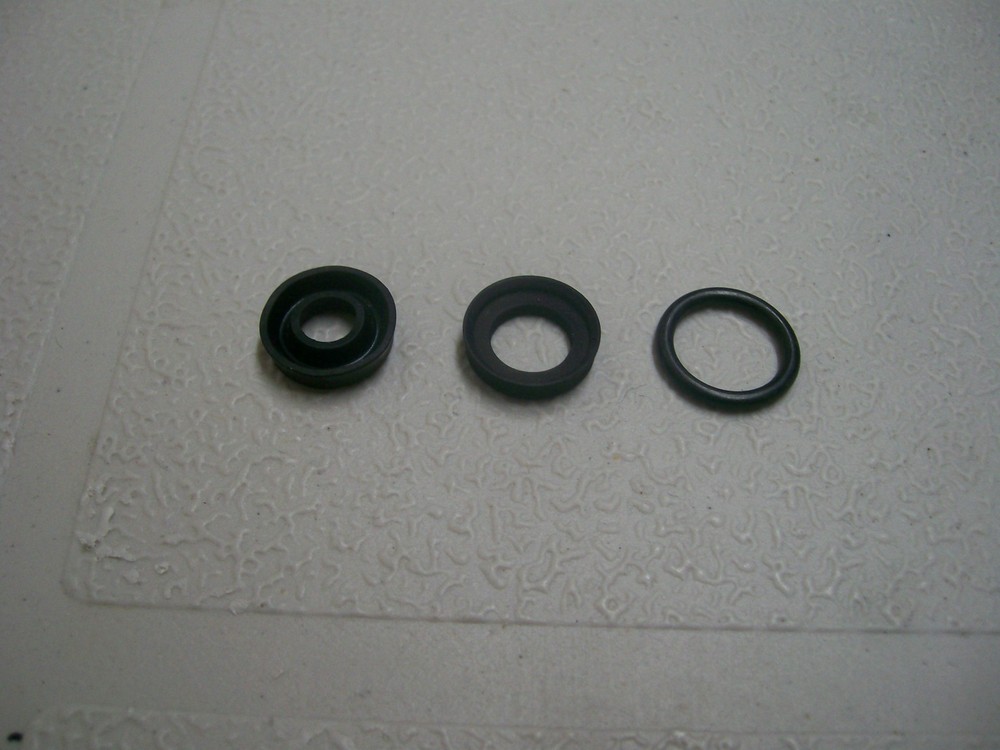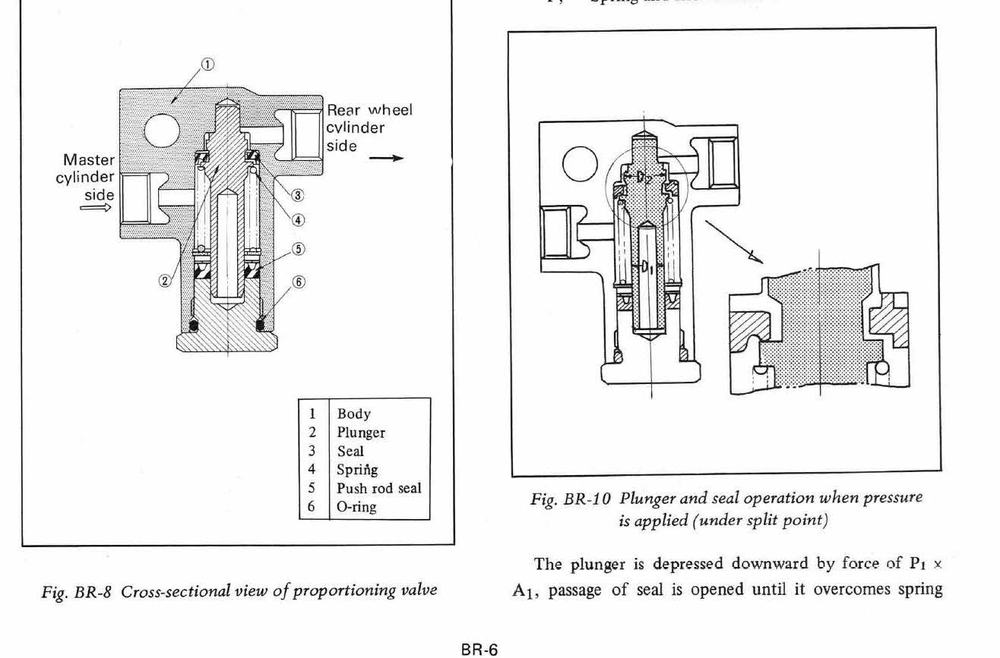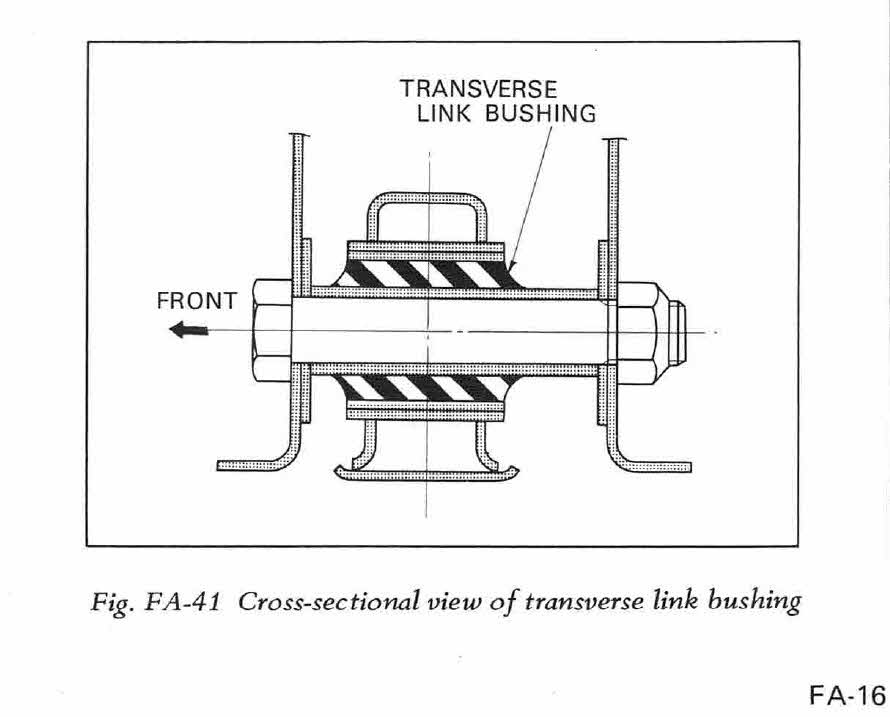Everything posted by Namerow
-
Steering box
Only one U-joint in the 510's steering shaft?
-
sweatys rebuild
You've managed to achieve a really nice stance for the car. The match-up of tire size/profile to wheel diameter/offset relative to the wheel openings looks spot-on. I really like those wheels, too. A refreshing change from Panasports.
-
Tracking Down The Clunk - Worn Lower Diff Mount?
The designs of the front insulator and the mustache bar bushings were tuned to isolate the chassis from the gear and drivetrain noise/vibration 'collected' by the diff casing. It will be interesting to see whether stuffing the front insulator's cavity with heater hose really does have an adverse effect in the form of gear howl getting into the cabin. Let us know what you discover. If a problem does set up, you might be able substitute something softer than heater hose that would be better able to meet the dual requirements of noise isolation and clunk elimination.
-
Steering box
Check the U-joint. Interesting that Nissan offered u-joint rebuild parts for the 510, but did not offer them for the 240Z. If the 510 parts are NLA at Nissan, it's possible that ez-to-source Kawasaki ATV halfshaft u-joints that fit the S30 will also work for the 510. $30 complete (spider, cups, bearing needles, seals, circlips, and grease fiiting) and relatively easy to install. A 64th inch of slop in the u-joint will be greatly amplified at the steering wheel and makes straight-ahead highway driving 'more involving'.
-
brake proportioning valve
I've now received my rebuild kit from MSA and I've taken a few pictures for reference. As you'll see, the three seals in my kit are all different -- two are lip seals, the third is an O-ring. One of the lip seals (the one on the left in my pix) is lipped on both the inner and outer circumference. The other (in the centre) is lipped on the outer circumference only. Both are about the same in height. The seal on the left with the inner & outer lips is pretty clearly Item 5 in FSM diagram BR-8. By default, that means that the single-lip seal in the centre has to be Item 3. Obviously, placing them in the right locations and getting each one correctly oriented (lips face inboard, flat sides face outboard) is going to be critical to making the valve work properly. I continue to be confused by the way the upper seal (Item 3) is depicted in FSM diagram BR-9. The shape of the seal's section on the left makes sense. However, the sectional shape on the right looks like a completely different seal! Am I missing something here?
-
Steering box
Sorry, but what kind of car is this?
-
Mustache bar bushings
The FSM diagram that Zedhead posted is from the 280Z manual, so it's possible that the bolts used for the 240 were stepped rather than tapered. The fact that Nissan's engineers chose to use a stepped/tapered design rather than a plain old bolt says to me that there's a lot more going on here, NVH-wise, than first meets the eye. The m-bar 'bolts' are more like pins with threaded ends. It's an expensive design (compared to a bolt), so it was used for a reason (just like those rubber-ribbed end-washers) It's a little hard to tell from the FSM sectional diagram, but it appears that only the upper 'special washer' (as the parts manual calls them) bears directly on the shoulder of the pin in the radial direction. If I'm right, it means that the 'eye' of the m-bar is solidly located (in the radial direction) only at the top, while the bottom 'floats' (in the radial direction) on the rubber of the lower special washer. It also means that the thick rubber of the big bushing only comes into play (in the radial direction) when the m-bar deflects far enough to bring the inner metal sleeve of the bushing into contact with the pin. My guess is that this is all about isolating high-frequency differential/gear noise from the chassis under light-load/cruise conditions (via the ribbed special washer), with the bushing only coming into play (laterally) to isolate against cornering-induced vibration (when the diff loads up laterally against the pins). Kind of a two-step isolator for lateral loads. In the vertical plane, the special washers and the bushing look they work in unison as a two-mode isolator (that is, they're both at work simultaneously, in series, but have different stiffnesses and natural frequencies and therefore serve to isolate different vibrational frequencies). Another interesting point (to me, anyway): the FSM refers to the m-bar as a 'transverse leaf spring'. That suggests that the bar itself is being used as a spring. The m-bar is only truly flexible in the fore-aft direction, so perhaps it comes into play when the diff is subjected to braking loads. One final thought: All of this suggests to me that it's not a good idea to jack up the rear of the car using the diff casing.
-
1971 HLS30-14938 "Lily" build
-
Tracking Down The Clunk - Worn Lower Diff Mount?
from Wikipedia... Hydrogenated nitrile butadiene rubber (HNBR) is widely known for its physical strength and retention of properties after long-term exposure to heat, oil and chemicals. Trade names include Zhanber (Lianda Corporation), Therban (Arlanxeo [5]) and Zetpol (Zeon Chemical). Depending on filler selection and loading, HNBR compounds typically have tensile strengths of 20–31 MPa when measured at 23 °C. Compounding techniques allow for HNBR to be used over a broad temperature range, -40 °C to 165 °C, with minimal degradation over long periods of time. As a group, HNBR elastomers have excellent resistance to common automotive fluids (e.g., engine oil, coolant, fuel, etc.) and many industrial chemicals. The unique properties and higher temperature rating attributed to HNBR when compared to NBR has resulted in wide adoption of HNBR in automotive, industrial, and assorted, performance-demanding applications. On a volume basis, the automotive market is the largest consumer, using HNBR for a host of dynamic and static seals, hoses, and belts. HNBR has also been widely employed in industrial sealing for oil field exploration and processing, as well as rolls for steel and paper mills.
-
Tracking Down The Clunk - Worn Lower Diff Mount?
Happy hunting, CO! Still hoping that someone can post those three measurements for the Nissan OE bushing so that we've got a reference point to work from...
-
Tracking Down The Clunk - Worn Lower Diff Mount?
Thinking out loud here... Has anyone ever checked to see whether any of the other, still-available Nissan steel-sleeved isolator bushings could be adapted to the moustache bar? The make-or-break dimension would be the outside diameter of the external sleeve, which would need to be pretty much spot-on. Length could be trimmed to suit (or two under-length bushes could be stacked and then cut to length). Inside diameter of the inner sleeve would only need to be within 10%, I would think (could be sleeved up, but not the opposite). The S30 bushes that come to mind are the spindle pin bushes, the front control arm inboard pivot, and the transmission mount. I have all three on hand and can provide their measurements. What I don't have are the the three key dimensions for the moustache bar bushings: Length Outside dia. of the outer sleeve Inside dia. of the inner sleeve Anybody? Even if none of the other S30 bushes will work, there are hundreds of steel-sleeved bushings out there on the market. Captain Obvious has shown an appetite for looking through online parts catalogs, so with the right dimensions in hand, maybe we (I mean, Captain Obvious ) can find a suitable replacement for the NLA Nissan parts. As for the wavy-shaped rubber end washers, I think suitable facsimiles could be cobbled up pretty easily from thick rubber washers, using a small-diameter sanding drum in a Dremel. Fiddly work, but would probably only take 30 minutes to make four. An alternative fab strategy would be to drill a set of radial holes through a double-thickness rubber washer and then slice it in half, creating a pair of the desired washers in the process. The biggest challenge here would be finding the right rubber washer to start with.
-
Thinking about installing an BMW M6 engine in my Z
Grannyknot's other nickname is, 'Teddy The Torch'.
-
240z Seat Strapping
Sometimes the obvious escapes us all . Now that you know the 'secret', it should be much easier. You'll need to use vise-grips to get a firm hold on the free clip so that you can pull against the strap tension and navigate the pins into their holes in the seat frame tube. When it comes to making the cuts in the strapping, this is a classic case of, 'measure twice, cut once'. One mistake and you'll be feeding more $$ into the coffers of MSA to order another strapping kit.
-
240z Seat Strapping
hmmm... I don't think you're going to like the results if you replace the straps with a metal plate. At least, not unless all the roads where you live are billiard-table smooth. The strapping kit isn't that hard to install. The three fore-aft straps all get cut to the same length. The MSA kit provides you with the details and includes enough webbing to do both seats with about 6" left over (which means there's no forgiveness if you screw up on any of your cuts). When cut to the correct length, you don't really have to stretch the straps very much to seat the end clips into the seat frame. I found the most difficult step was punching holes through the straps for the rivets to pass through. That rubberized webbing is tough! When you're installing the end clips on each strap, make sure they're both facing the same way up before you install the rivets (it's no fun trying to remove the rivets to fix a mistake made here). If you work at it methodically, you should be able to complete the strapping job for both seats in a morning or an afternoon.
-
Thinking about installing an BMW M6 engine in my Z
Did you find your o-a torch head yet? p.s. Thx again for the help with the brazing. After I dressed down the two ports, the manifold went back in the blast cabinet to clean it up again, after which ti got a coat of VHT primer. Needs to cure for a week before I can do the finish coat. I was tempted by your idea of sawing off the nut heads and tapping the holes to take some nice, shiny brass plugs... but I got over it.
-
Anyone done business with these guys?
For more insights, try a Google street view of his business address I think he's just a re-seller. And not a very good one, it seems.
-
Mustache bar bushings
I wonder if the specialist company that rebuilds harmonic balancers (I've forgotten the name and location) would be interested in taking this on? Same basic principal. It's pretty clear that a solid urethane bush is not going to produce the same result as a webbed rubber bush. And I don't think the serrated end washers were added by the Nissan engineers just becuase they looked cool.
- headliner
-
Heater blower
Glad to hear things are working properly. I think if you did a search on this site, you'd probably find a couple of dozen threads that start with the words, 'Can anybody tell me what this ___ (insert color) wire is for?' It seems that most Z's fell prey to D-I-Y AM/FM/cassette player installers at one time or another, all of whom went looking for a power wire to tap into.
-
Ignition Switch Question
Nope. The 'S' terminal becomes and stays 'live' over the full range of key travel in the 'Start' position. Same for both switches. I don't necessarily disagree that there might be something wrong with the internals of my Beck & Arnley switch, but the housing halves are staked closed so I'm not interested in try to get it apart to see what might be going on. Maybe somebody else has got an aftermarket 240 ignition switch lying around loose that they could try the same experiment with. Just to satisfy my curiosity.
- Intake Manifold Thermostat - How do I check it and service it?
-
Ignition Switch Question
Nope. Nothing's loose. The detent for the Start position (for either switch) isn't a 'click-stop' detent like the other positions. The Start detent actually provides 5 or so degrees of key travel before the key runs up against a hard stop. During that travel, the key rotation is resisted by an internal spring. It's something you probably wouldn't notice when you're doing a normal engine start, but you'll notice it right away if you try operating the key with the battery disconnected. It's probably there to provide a cushioned stop for the key when the operator is extra-energetic about trying to get the engine started.
- Intake Manifold Thermostat - How do I check it and service it?
-
Ignition Switch Question
I have a question for the electrical experts: I bought a Beck Arnley aftermarket ignition switch to replace the 40-year-old OE switch in my '70 Z. Seemed like a good preventative maintenance step, with the steering column currently out of the car. However, I've found puzzling difference in the operating logic of the two switches. It has to do with the switches' 'R' circuit, which I'm pretty sure means, 'Resistor' (as in, ballast resistor for the coil/tach circuit). With input power applied to each switch module by way of the 'B' (battery) terminal and output monitored at the 'R' terminal, this is what I find: Key Position "R' - OE Switch 'R' - Aftermarket Switch OFF dead dead ACC dead dead ON dead dead START live live to start, then goes dead when key is turned further against the detent spring It's been noted elsewhere that the Z's ignition circuitry is designed so that the ballast resistor is bypassed during engine start (so as to deliver higher voltage to the coil/points) and then brought back into the circuit during 'run' operation (so as to operate the points/coil at the lower, normal voltage). So a 'live' condition at the 'R' terminal of the switch means 'resistor out', whereas a 'dead' condition equates to 'resistor in'. My OE ignition switch adheres to this simple, two-step 'resistor out/resistor in' logic. The aftermarket switch does too... at first. But then as I twist the key a little further in the 'START' sector, working against the resistance of the internal spring to take the key all the way to the hard stop, the switch action reverts to 'resistor out'. This would typically be where the key would sit while cranking the engine (i.e. twisted all the way up to the hard stop) I'm not certain whether the aftermarket switch was designed this way on purpose, or not. There's also the possibility that it's just a defective unit. So now I'm not sure whether I want to use it. Does anybody have an idea about why the aftermarket switch would change from 'resistor out' to 'resistor in' halfway through the 'Start' segment? Could it be that this was done on purpose, so that the duration of the high voltage ('resistor out') condition in the coil/points circuit would be restricted to just the first part-rotation of the crankshaft, so as to avoid burning the points during prolonged cranking?
-
brake proportioning valve
I have a rebuild kit on order from MSA. When I get the chance to have a look at it, I'll let you know whether the two seals are identical vs. different.




